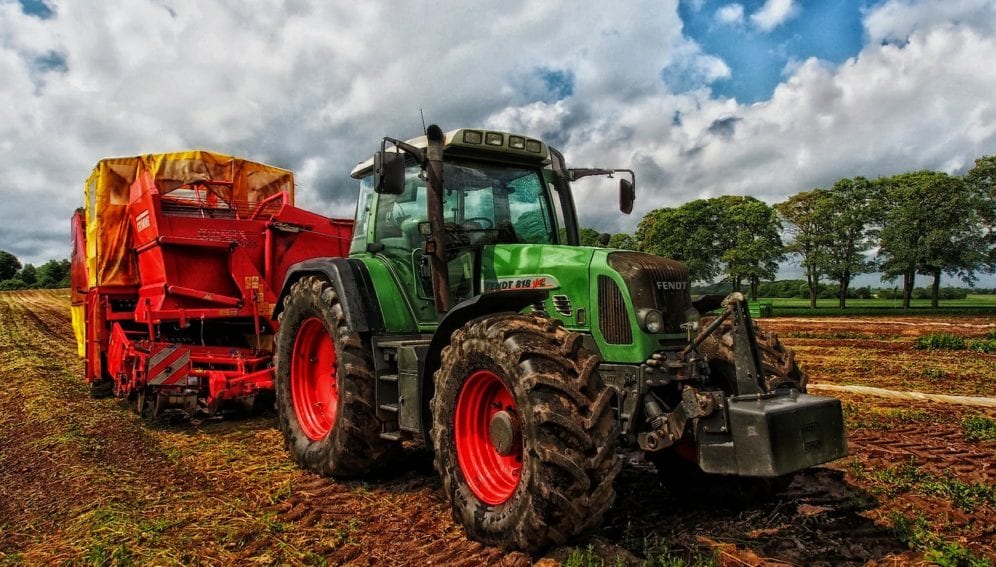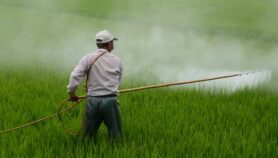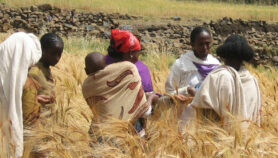26/06/20
Industrial agriculture threat to the environment

By: Gilbert Nakweya
Send to a friend
The details you provide on this page will not be used to send unsolicited email, and will not be sold to a 3rd party. See privacy policy.
[NAIROBI] Local and international donors are investing more in industrial agricultural projects to the detriment of interventions that simultaneously transform food systems and protect the environment, a report says.
The report, developed by the UK Institute of Development Studies, Swiss Biovision Foundation for Ecological Development, and the International Panel of Experts on Sustainable Food Systems (IPES-Food), adds that African smallholders’ vulnerabilities to negative social and environmental impacts such as insecure land rights and severe droughts respectively call for a viable agricultural approach called agroecology that builds sustainable environment and resilient food systems.
According to the report, agroecology is a farming method that promotes the use of nature including plants to enrich soils, improve soil health and fight agricultural pests. Large-scale production of crops and animals — industrial agriculture — leads to excessive use of chemical fertilisers and pesticides with environmental hazards including pollution.
“We cannot take low yields in exchange for a better environment. We need models that ensure food security and environmental sustainability.”
Denis Otieno, Masinde Muliro University of Science and Technology
Researchers analysed 445 agricultural research for development projects in Kenya funded by institutions in Kenya, Bill and Melinda Gates Foundation (BMGF) and Switzerland and assessed the projects’ contributions to the country’s transition to sustainable food systems.
“As many as 85 per cent of projects funded by the BMGF and more than 70 per cent of projects carried out by Kenyan research institutes were limited to supporting industrial agriculture,” says the report published this month (10 June).
“Just 13 per cent of Swiss-funded projects focussed only on industrial agriculture and efficiency-based approaches,” the report adds.
Olivier De Schutter, co-chair, IPES-Food and co-author of the report, tells SciDev.Net that large donors and governments often do not believe that agroecology can be sufficiently productive and meet the challenge of rising demand for food.
“Big donors tend to neglect the potential of agroecology, in part, simply because of a lack of imagination,” explains De Schutter. “The green revolution technologies [such as chemical fertilisers] have since the 1960s been promoted as the only pathway that could be followed, without any serious consideration of the alternatives.”
The 445 research projects, which were implemented from 2013 to 2018, had a total budget of nearly US$1.2 billion.
But the Bill and Melinda Gates Foundation said in an email statement that their agricultural development investments seek to make smallholder crops and livestock more productive, improve nutrition, and help empower women farmers.
“Over the past decade, we have worked closely with national partners in Sub-Saharan Africa and South Asia, to identify and support a wide range of innovations, investments, and policies that empower farmers with the tools they need to improve their livelihoods and lift their communities out of poverty,” the statement says.
We believe smallholders should be able to choose from a range of innovations that can help them adapt to stressful conditions like high temperatures, droughts, floods, pests, and diseases, the statement adds.
The report makes recommendations for accelerating the implementation of agricultural projects that focus on agroecology. These include a shift towards long-term funding models, and a need for donors to require projects to involve smallholders and communities in co-designing them.
De Schutter, who is also the UN special rapporteur on extreme poverty and human rights, calls for investment in training in agroecology because the practice is knowledge-intensive and the techniques it supports are highly context-specific.
Denis Otieno, a resource economist at Kenya’s Masinde Muliro University of Science and Technology, says that the high returns on investment from industrial agriculture makes it more attractive than agroecology.
“Since the industrial revolution, industrial agriculture responds to our challenges of food security and raw materials. It is a business model that almost guarantees return on money invested despite pitfalls of pollution and loss of biodiversity that come with it,” Otieno explains.
But Otieno adds that policymakers need to strike a balance between industrial agriculture and agroecology because both have advantages in addressing the rising food demands and ensuring environmental sustainability.For instance, industrial agriculture could support agroecology through taxation that pays for the harms such as pollution caused by the former.
“Both models have strengths and [thus African countries] need a policy mix of the two. We cannot take low yields in exchange for a better environment. We need models that ensure food security and environmental sustainability,” he tells SciDev.Net.
References
Money flows: What is holding back investment in agroecological research for Africa? (Biovision Foundation for Ecological Development and International Panel of Experts on Sustainable Food Systems. 10 June 2020)













